Selected Research
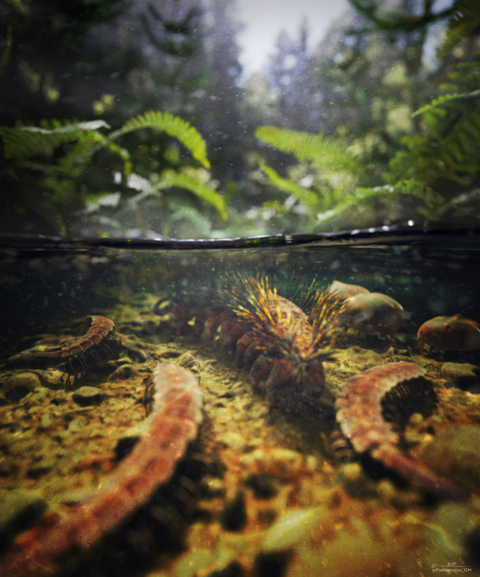

Palaeocampa anthrax: A Freshwater Lobopodian with Chemical Defenses
In this study, we redescribed Palaeocampa anthrax, a Carboniferous fossil long misinterpreted as everything from a caterpillar to a fireworm. Our research revealed that it was in fact a lobopodian, an ancient relative of velvet worms and water bears, making it both the youngest known lobopodian of its kind and the first convincingly shown to inhabit freshwater ecosystems.
Using advanced microscopy and spectroscopic analyses, we demonstrated that Palaeocampa possessed a unique armature of biomineralized spines capable of secreting noxious chemicals, representing one of the earliest examples of chemical defense in this lineage. This discovery reshapes our understanding of panarthropod evolution, showing that lobopodians not only survived far longer than previously thought but also adapted in unexpected ecological ways.
Knecht, R.J., McCall, C.R., Tsai, C.C., Rabideau Childers, R.A. and Yu, N., 2025. Palaeocampa anthrax, an armored freshwater lobopodian with chemical defenses from the Carboniferous. Communications Biology, 8(1), p.1080.
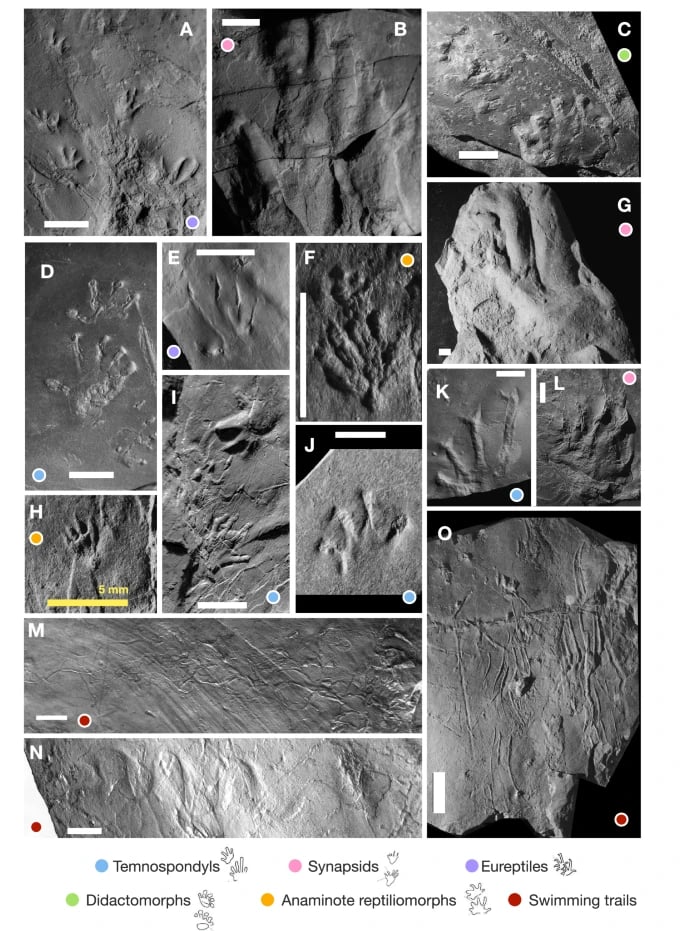

Early Pennsylvanian Ecosystem on a Subhumid Alluvial Fan
In this study, we described a newly discovered Lagerstätte from the Wamsutta Formation of Massachusetts (~320–318 million years ago), one of the rare sites that preserves Early Pennsylvanian terrestrial ecosystems outside of coal swamps. The site captures an exceptionally diverse community of plants, insects, arachnids, myriapods, horseshoe crabs, amphibians, and early reptiles, many preserved as full-body impressions and trackways. Among the most striking finds are some of the earliest evidence of insect oviposition, piercing-and-sucking herbivory, and gall formation in the fossil record, as well as macroscopic fungal rhizomorphs in direct association with fossil leaves.
Unlike the better-known Carboniferous coal deposits, the Wamsutta site represents a subhumid, clastic alluvial fan environment, providing a rare glimpse into upland ecosystems during a critical interval of terrestrial diversification. This work highlights how life was structured and interacting at the dawn of modern ecosystems, bridging a major gap in the fossil record.
This work demonstrates that insect “extended phenotypes” can be remotely detected at landscape scales, providing a powerful new tool for monitoring biodiversity, ecosystem health, and the spread of insect-vectored disturbances.
Knecht, R.J., Benner, J.S., Swain, A., Azevedo-Schmidt, L., Cleal, C.J., Labandeira, C.C., Engel, M.S., Dunlop, J.A., Selden, P.A., Eble, C.F., Renczkowski, M.D., Wheeler, D.A., Funderburk, M.M., Emma, S.L., Knoll, A.H., and Pierce, N.E., 2024. Early Pennsylvanian Lagerstätte reveals a diverse ecosystem on a subhumid, alluvial fan. Nature Communications 15: 7876.
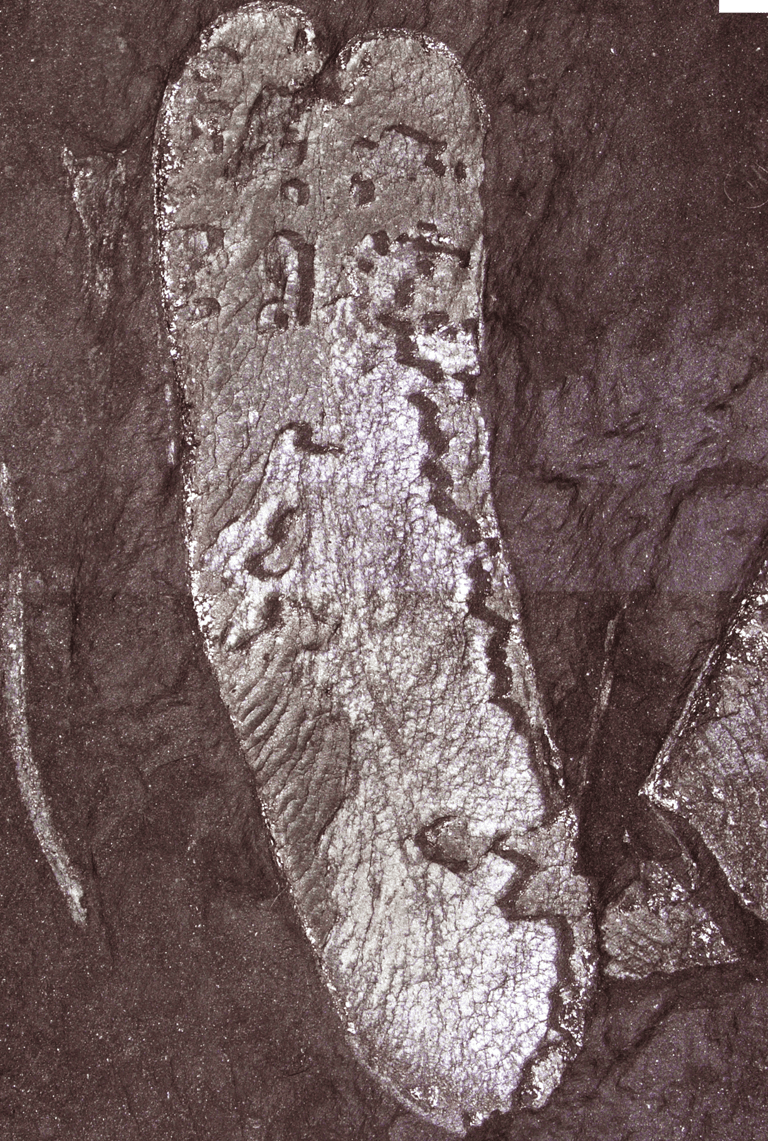

The Origins of Leaf Mining in the Carboniferous
In this study, we documented a fossilized feeding trace from the Rhode Island Formation of Massachusetts (~312 million years ago) that represents the earliest evidence of insects feeding inside leaves. Preserved on the seed fern Macroneuropteris scheuchzeri, the trace shows a sinuous path within the leaf tissue, along with chemical signatures of insect frass. Although not a “true” leaf mine in the modern sense, this fossil captures a key evolutionary transition, early insects experimenting with endophytic feeding strategies that later gave rise to the specialized leaf miners seen in today’s beetles, flies, moths, and wasps.
This discovery pushes back the origin of foliar endophagy by tens of millions of years and provides rare insight into the behaviors of early holometabolous insects. It highlights how delicate trace fossils can reveal the hidden evolutionary steps that shaped modern plant–insect interactions.
Knecht, R.J., Swain, A., Benner, J.S., Emma, S.L., Pierce, N.E. and Labandeira, C.C., 2023. Endophytic ancestors of modern leaf miners may have evolved in the Late Carboniferous. New Phytologist, 240(5), pp.2050-2057.
👉 Read the article in New Phytologist
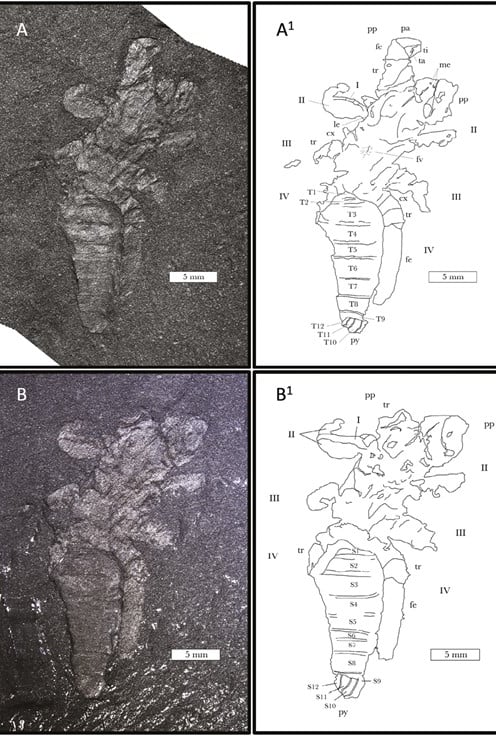

The Largest and Smallest Paleozoic Whip Scorpions
From the Carboniferous rocks of Massachusetts, my colleagues and I described two remarkable fossils that expand our knowledge of ancient arachnids. The first is Parilisthelyphonus bryantae, a new body fossil representing the largest known Paleozoic whip scorpion—and the first arachnid discovered in the Rhode Island Formation in over 130 years. The second, Inmontibusichnus charleshenryturneri, is a newly named ichnospecies based on a tiny full-body impression and trackway from the Wamsutta Formation, likely produced by the smallest Paleozoic whip scorpion yet known.
Both new species honor figures whose legacies extend beyond paleontology. Parilisthelyphonus bryantae commemorates Elizabeth Bangs Bryant (1875–1953), a pioneering arachnologist who worked at Harvard’s Museum of Comparative Zoology for more than fifty years, describing spiders from New England and the Caribbean at a time when women were often excluded from science. Inmontibusichnus charleshenryturneri recognizes Charles Henry Turner (1867–1923), an African American zoologist and civil rights advocate who made groundbreaking contributions to the study of insect behavior despite systemic barriers in academia.
Together, these finds make the Narragansett Basin only the second locality in the Western Hemisphere to yield Paleozoic whip scorpions, bridging a key geographic gap between the classic Mazon Creek fauna of Illinois and European sites. They provide an important new calibration point for whip scorpion evolution and highlight the biogeographic significance of New England’s Carboniferous basins.
Knecht, Richard J., Jacob S. Benner, Jason A. Dunlop, and Mark D. Renczkowski. "The largest Palaeozoic whip scorpion and the smallest (Arachnida: Uropygi: Thelyphonida); a new species and a new ichnospecies from the Carboniferous of New England, USA." Zoological Journal of the Linnean Society 200, no. 3 (2024): 690-704.
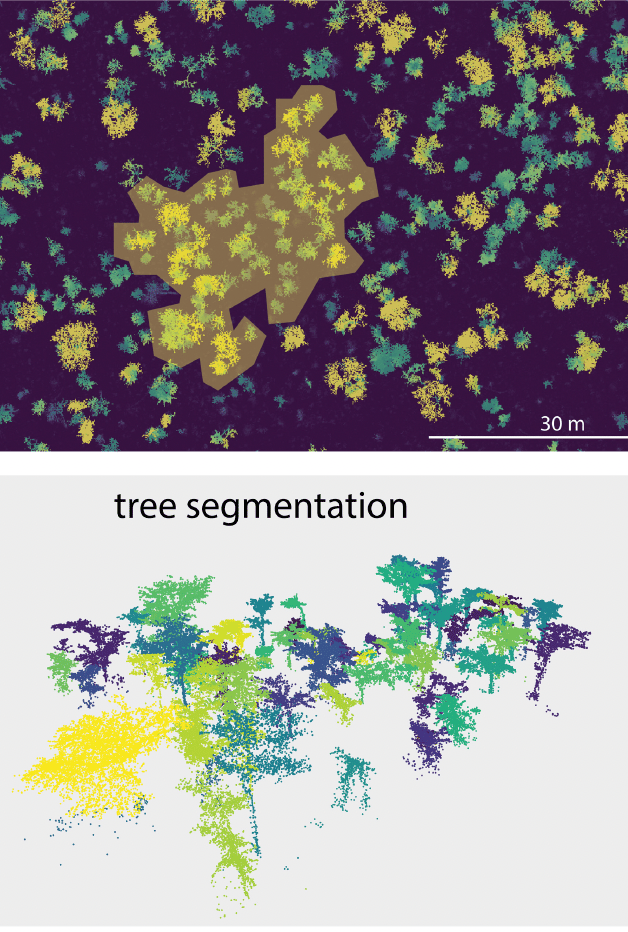

Remote Sensing Biodiversity: Where Machine Learning Meets Ecology
In collaboration with colleagues at Harvard, the Mpala Research Centre (Kenya), and international partners, I helped develop a novel method for detecting insect-driven changes in vegetation using airborne LiDAR and machine learning. Our study focused on East African acacia trees that host symbiotic ant colonies, which alter the shape of tree canopies in distinctive ways. By combining high-resolution UAV LiDAR scans with a convolutional neural network classifier, we were able to automatically identify trees occupied by different ant species, replicating the results of labor-intensive ground surveys across thousands of trees in a fraction of the time.
This work demonstrates that insect “extended phenotypes” can be remotely detected at landscape scales, providing a powerful new tool for monitoring biodiversity, ecosystem health, and the spread of insect-vectored disturbances.
Wang, Z., Huben, R., Boucher, P.B., Van Amburg, C., Zeng, J., Chung, N., Wang, J., King, J., Knecht, R.J., Ng'iru, I., Baraza, A., Baker, C.C.M., Martins, D.J., Pierce, N.E., and Davies, A.B. 2024. Automated detection of an insect‐induced keystone vegetation phenotype using airborne LiDAR. Methods in Ecology and Evolution 15: 978-993.
👉 Read the article in Methods in Ecology and Evolution
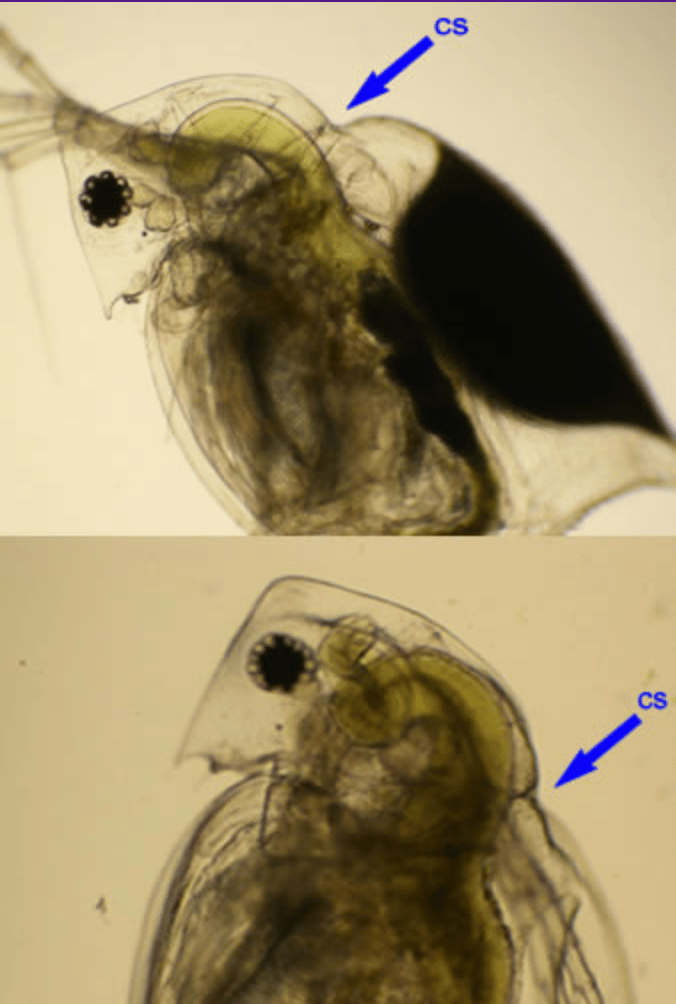

Revisiting the “Paradox of the Plankton” in Aziscohos Lake
For my Master’s research at the University of New Hampshire, I revisited a classic ecological puzzle known as the “Paradox of the Plankton”, the question of how multiple plankton species can coexist in seemingly uniform environments when the principle of competitive exclusion predicts otherwise. Focusing on the keystone freshwater crustacean genus Daphnia, I resampled Aziscohos Lake in western Maine, a site last studied over fifty years ago.
I found that not only had five of the original six species persisted since the 1960s, but three additional species were present, making Aziscohos an extreme outlier in Daphnia diversity. My analysis suggests that annual water-level drawdowns compress the littoral zone and force overlap between littoral and pelagic species, helping explain this unusually high richness. This work provided new insights into long-term coexistence dynamics and set the stage for integrating paleoecology and resurrection ecology into freshwater biodiversity studies.
Knecht, R.J., 2018. The Structure, Limits, and Drivers of Daphnid Diversity (Master's thesis, University of New Hampshire).
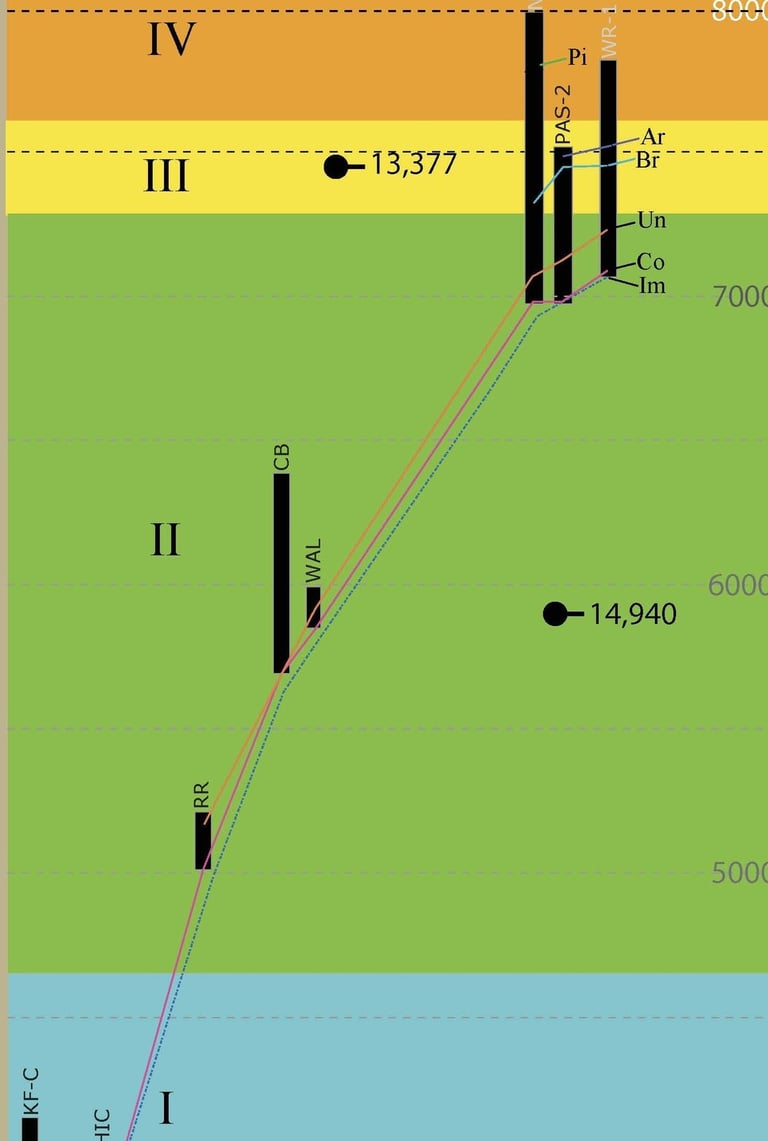

Tracing Postglacial Ecosystem Recovery in New England
In this study, we used fossil traces preserved in the varved sediments of glacial Lake Hitchcock (Connecticut River Valley) and Lake Merrimack (New Hampshire) to reconstruct how ecosystems reestablished themselves after the last Ice Age. These finely layered deposits, dated with the New England Varve Chronology, preserve evidence of fish swimming trails (Undichna), sculpin resting and nesting marks (Broomichnium, Pisichnus), crustacean traces (Surculichnus), and invertebrate burrows (Cochlichnus).
From this record, we identified four distinct successional stages of ecological recovery, from the first opportunistic invertebrates colonizing barren lake bottoms, to the arrival of fish and crustaceans, and finally to complex benthic communities capable of supporting breeding populations. This work provides one of the most precise reconstructions of postglacial ecological succession available, showing how New England’s freshwater ecosystems developed in lockstep with deglaciation and climate change.
Benner, J.S., Ridge, J.C. and Knecht, R.J., 2009. Timing of post-glacial reinhabitation and ecological development of two New England, USA, drainages based on trace fossil evidence. Palaeogeography, Palaeoclimatology, Palaeoecology, 272(3-4), pp.212-231.
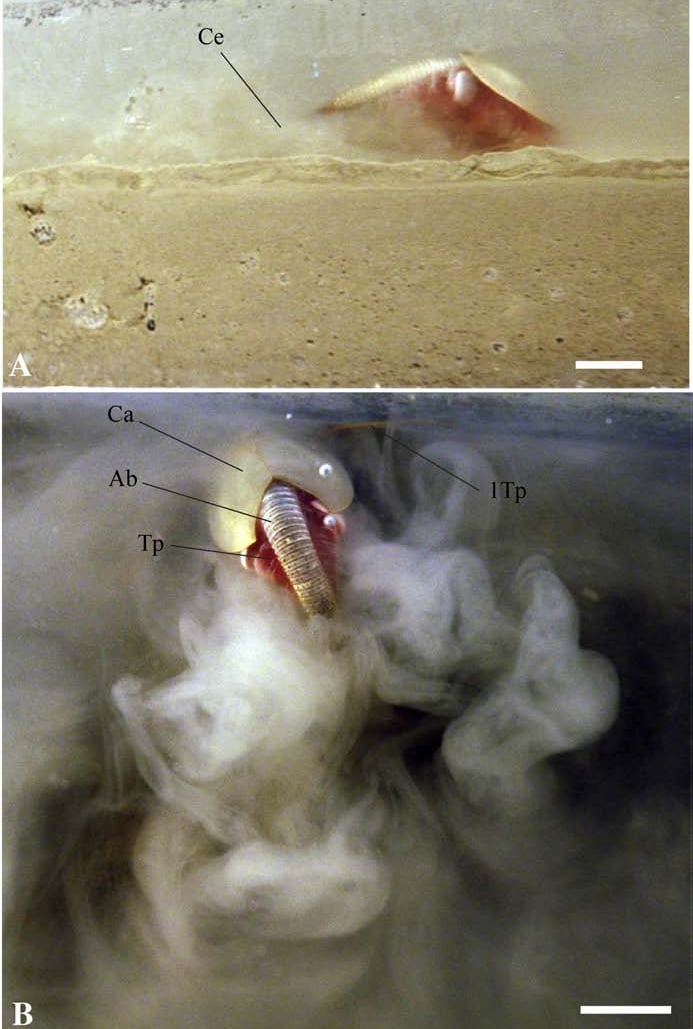

NotostracanTraces from Glacial Lake Hitchcock
In this study, we described a new ichnogenus and ichnospecies, Surculichnus bifurcauda, from Late Pleistocene varves of glacial Lake Hitchcock in the Connecticut River Valley (~13,300 years ago). These unusual trace fossils consist of paired depressions and furrows that closely match the behaviors of living tadpole shrimp (Triops), small crustaceans sometimes called “living fossils.”
To test this interpretation, we conducted controlled aquarium experiments with modern Triops longicaudatus, which reproduced the same trace patterns seen in the fossil record. The results suggest that Surculichnus records foraging or reproductive behavior of notostracans living alongside fish in the late-glacial lake. This represents the first evidence of notostracans in Lake Hitchcock and highlights how experimental neoichnology can link ancient traces with living analogues.
Knecht, R.J., Benner, J.S., Rogers, D.C. and Ridge, J.C., 2009. Surculichnus bifurcauda n. igen., n. isp., a trace fossil from Late Pleistocene glaciolacustrine varves of the Connecticut River Valley, USA, attributed to notostracan crustaceans based on neoichnological experimentation. Palaeogeography, Palaeoclimatology, Palaeoecology, 272(3-4), pp.232-239.
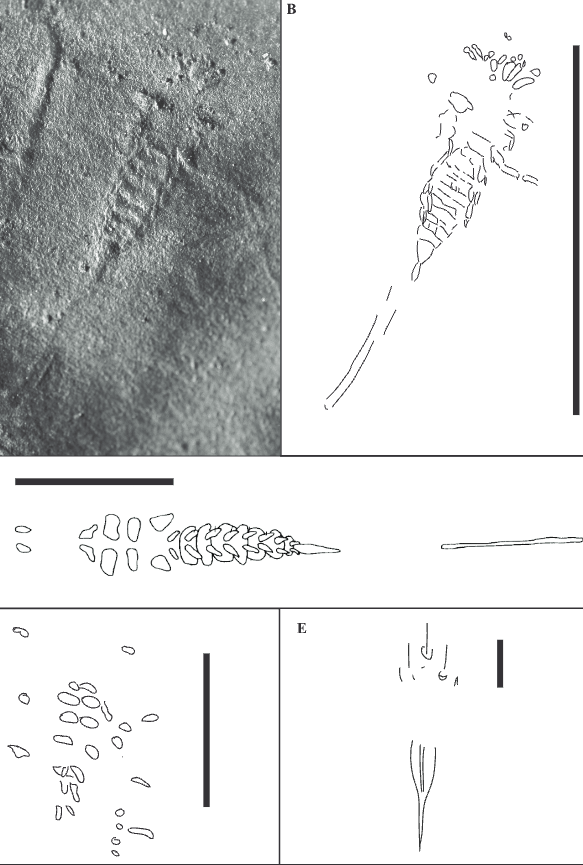

Revising Tonganoxichnus: Traces of Jumping Insects in the Carboniferous
In this collaborative study, we revised the ichnogenus Tonganoxichnus, a distinctive type of insect trace fossil made by jumping bristletails (Archaeognatha). Using new material from the Late Carboniferous Wamsutta Formation of Massachusetts, we recognized previously overlooked anatomical details that warranted the erection of a new ichnospecies, T. attleboroensis, named after the town where the fossils were found.
We also described a new ichnogenus, Cardinichnus, to account for a distinct style of pivoting behavior preserved in multiple specimens, and we named a new ichnospecies, C. giberti, in honor of Spanish ichnologist Jordi Maria de Gibert. Together, these revisions sharpen our understanding of how early insects moved, rested, and interacted with their environments, while expanding the record of insect diversity and behavior in upland Carboniferous ecosystems.
Benner, J.S., Knecht, R.J., and Engel, M.S., 2015. Tonganoxichnus: a revision of the ichnogenus with new material from Massachusetts. Ichnology: papers from Ichnia III. Edited by D. McIllroy. Geological Association of Canada, Miscellaneous Publication, 9, pp.31-43.
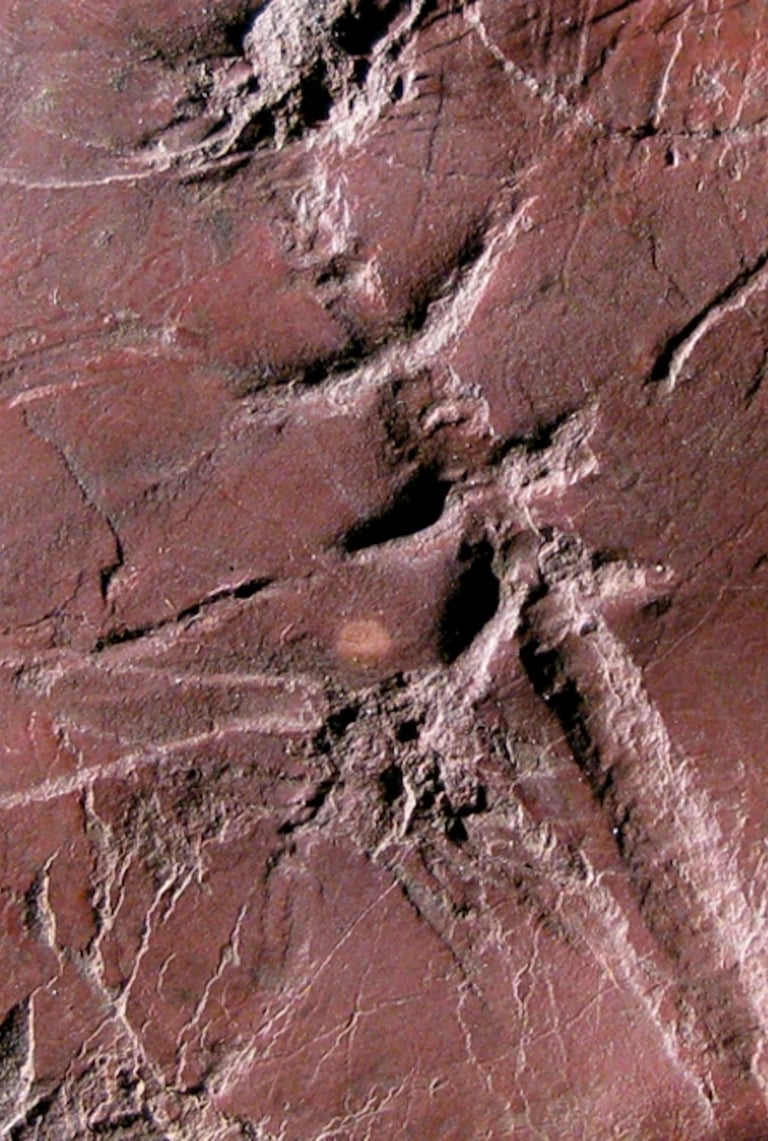

The Oldest Full-Body Impression of a Flying Insect
In research published in Proceedings of the National Academy of Sciences, my colleagues and I described the earliest known full-body impression of a winged insect, discovered in the Late Carboniferous Wamsutta Formation of Massachusetts (~318-320 million years ago). Unlike compression fossils, this trace was left by a living insect as it briefly landed in soft mud, preserving its body and legs in remarkable detail.
Analysis showed the trace maker was a stem-group mayfly, providing a rare glimpse of early flight behavior in insects at a time when their fossil record is notoriously sparse. This discovery not only extends our knowledge of insect evolution but also highlights how trace fossils can capture unique behavioral evidence that body fossils alone cannot.
Knecht, R.J., Engel, M.S. and Benner, J.S., 2011. Late Carboniferous paleoichnology reveals the oldest full-body impression of a flying insect. Proceedings of the National Academy of Sciences, 108(16), pp.6515-6519.
Contact me
rjknecht@umich.edu